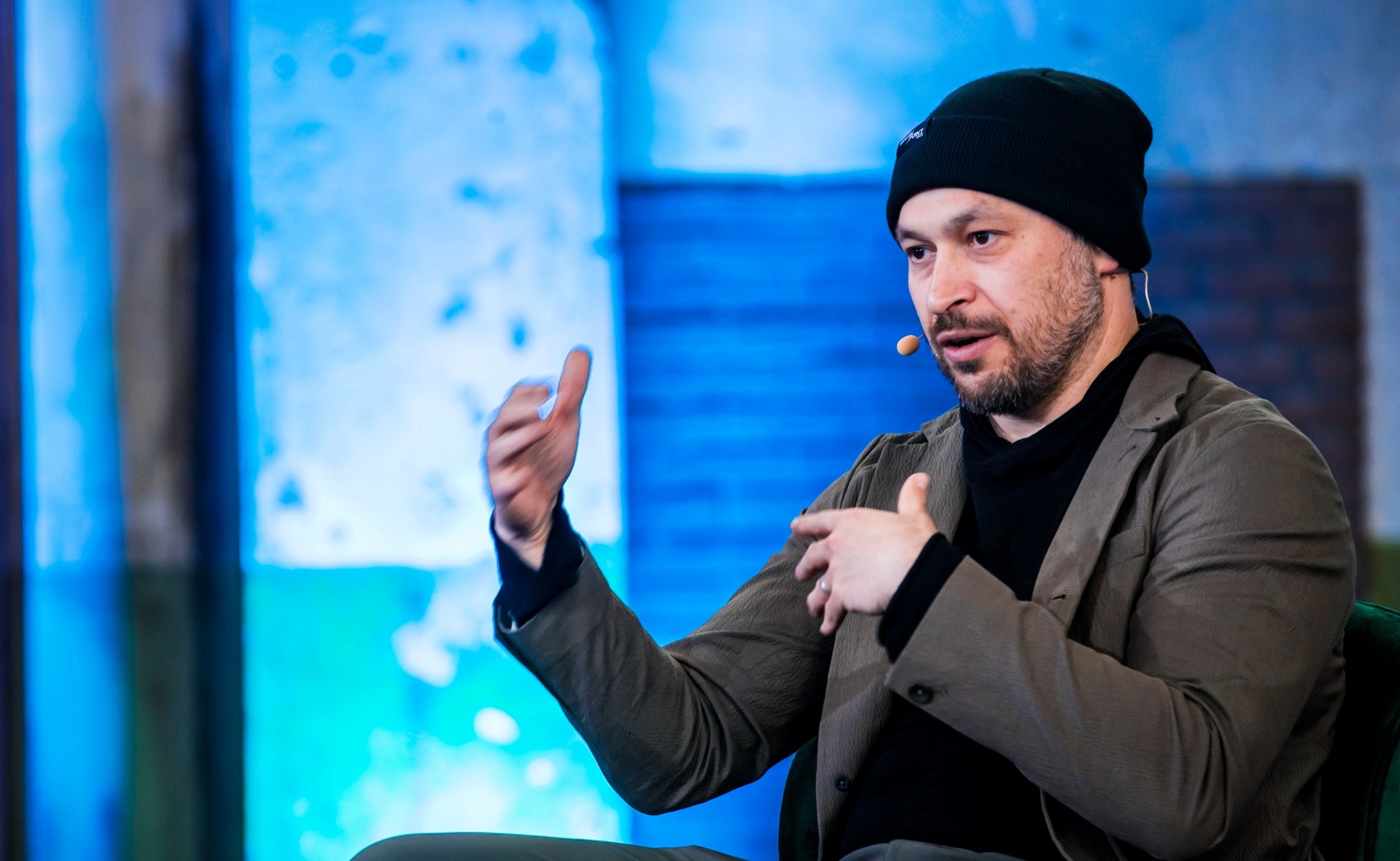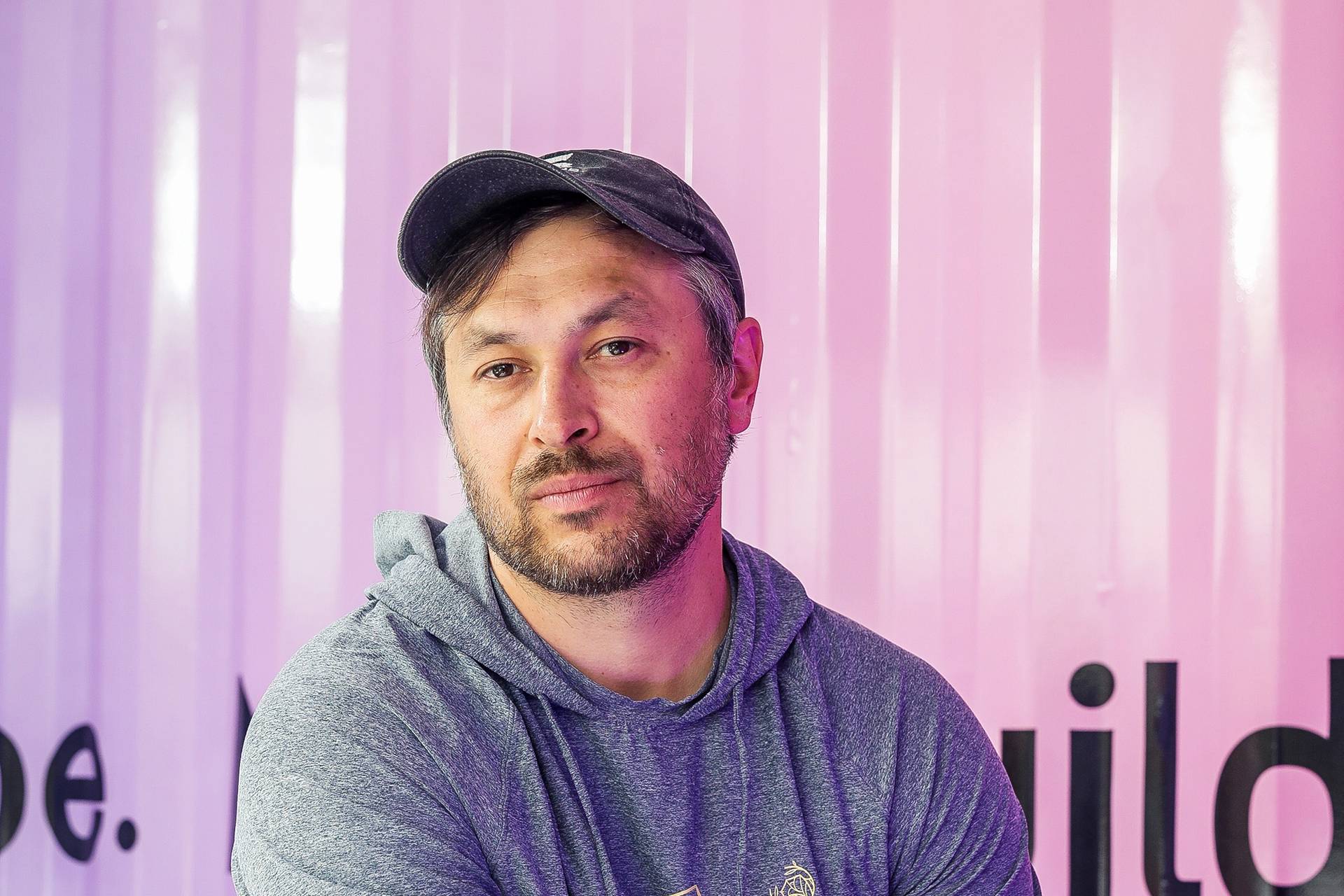위키 구독하기
Share wiki
Bookmark
Anatoly Yakovenko
Anatoly Yakovenko
아나톨리 야코벤코(Anatoly Yakovenko)는 솔라나의 CEO 겸 공동 설립자입니다. 솔라나 이전에는 퀄컴(Qualcomm)에서 운영 체제 개발 팀장, 메소스피어(Mesosphere)에서 분산 시스템 개발 팀장, 드롭박스(Dropbox)에서 압축 기술 개발 팀장을 역임했습니다. [1]
경력
야코벤코(Yakovenko)는 VoIP(Voice over Internet Protocol) 스타트업인 Alescere의 공동 설립자 중 한 명이었으며, 중소기업을 위한 VoIP 시스템의 SIP 및 RTP 프로토콜 스택과 서버 구성 요소 개발을 주도했습니다.
이후 2003년 퀄컴(Qualcomm)에 입사하여 12년간 근무했습니다. 12년간의 근무 후, 그는 수석 기술 엔지니어 매니저(Senior Staff Engineer Manager)직을 맡게 되었으며, 2016년 7월까지 약 3년간 해당 직책을 수행했습니다. 퀄컴(Qualcomm)에서 그는 여러 역할을 수행하고 여러 업무를 담당했는데, 그중 일부는 다음과 같습니다.
- 차세대 애플리케이션을 위한 퀄컴(Qualcomm) 칩셋에서 고성능 헥사곤(Hexagon) DSP 오프로딩 소프트웨어 스택을 담당하는 10명 규모 팀의 수석 설계자
- 증강 현실, 가상 현실, 3D 카메라 처리, 4K 비디오 후처리 및 GoogleX의 Project Tango를 포함한 상용 애플리케이션
2016년 7월부터 2017년 4월까지 그는 메소스피어(Mesosphere, 현재 D2iQ로 알려짐)에서 소프트웨어 엔지니어로 근무하며 회사의 분산 운영 체제를 구축했습니다.
Solana를 만들기 전, 그는 2017년 5월부터 2017년 10월까지 Dropbox에서 소프트웨어 엔지니어로 근무했습니다. Dropbox에서 그는 분산 시스템 및 압축에 중점을 두었습니다.
블록체인
아나톨리는 처음 출시되었을 때 비트코인(Bitcoin) 채굴을 시도했습니다. 하지만 나중에는 이더리움(Ethereum)과 이더리움 가상 머신(EVM)에 더 관심을 갖게 되었는데, 비트코인과 유사하지만 혁신적인 측면을 보았기 때문입니다. 비록 여전히 자바스크립트와 유사하다고 생각했지만 말입니다. 2017년, 그는 친구들과 함께 그래픽 처리 장치(GPU)를 사용하는 암호화폐(cryptocurrency) 채굴 스타트업을 시작하는 것을 고려했습니다. GPU를 사용하여 딥 러닝 작업을 수행하여 스타트업 비용을 상쇄할 계획이었습니다. 아나톨리는 원래 암호화폐보다 딥 러닝에 더 관심이 많았지만, 결국 “확장성 문제는 어떻게 해결할 것인가?”라는 질문과 관련하여 후자에 관심을 갖게 되었습니다. [14]
퀄컴에서 무선 프로토콜을 사용하여 이러한 종류의 문제에 대한 확장성을 어떻게 해결할지 생각하기 시작했고, 그게 바로 제가 깊이 파고들게 된 진짜 이유입니다.
솔라나 (Solana)
아나톨리 야코벤코(Anatoly Yakovenko)가 2017년에 솔라나를 설립했습니다. 그는 솔라나의 백서 원본 저자이기도 합니다. 프로젝트가 서비스 중단 및 해킹을 겪었음에도 불구하고, 생태계는 꾸준히 성장해 왔습니다.[15]
야코벤코와 그의 팀은 이 목표를 달성하기 위해 PoH(Proof of History)라는 새로운 합의 알고리즘을 만들었습니다. PoH를 구현함으로써 솔라나 블록체인은 초당 최대 50,000건의 트랜잭션을 처리할 수 있게 되어 세계에서 가장 빠른 블록체인 중 하나가 되었습니다. [17]
2022년 메사리의 연례 컨퍼런스 메인넷(Mainnet)에서의 인터뷰에서 그는 솔라나가 주요 레이어 1 프로토콜 중 하나가 된 경로에 대해 다음과 같이 설명했습니다. [18]
훌륭한 전략이었다고 말하고 싶지만, 사실 필요에 의한 결과였다고 생각합니다. 우리는 항상 매우 짧은 시간 안에 결과를 내야 했습니다. 항상 20개월 이하였죠. 그래서 12명의 엔지니어로 구성된 매우 작은 팀이 2년 만에 빠른 블록체인이 병렬 실행이 가능하다는 것을 증명하기 위한 최소한의 기능만 구현했습니다. 즉, EVM 지원이나 이더리움과 같은 기능은 없었습니다.
같은 인터뷰에서 그는 솔라나 랩스의 자회사인 솔라나 모바일과 하드웨어 및 소프트웨어 제조업체인 OSOM이 공동으로 개발한 모바일폰인 사가(Saga)에 대해 이야기했습니다. [18]
애플리케이션은 점점 더 정교해지고 훨씬 더 복잡한 미디어와 상호 작용을 처리하며, 자체 보관은 여전히 위험하고 불편합니다. 그리고 휴대전화를 보면 ‘왜 이게 내 하드웨어 지갑이 아니지?’라는 생각이 듭니다. 왜 이렇게 복잡한 작업을 하는 애플리케이션 안에 시드 구문을 저장하고 있을까요? 그래서 첫 번째 부분이고, 두 번째 부분은 분산화가 진정한 현실 세계 디지털 자산을 가능하게 한다는 것입니다.
솔라나의 기원은 야코벤코의 컴퓨터 엔지니어로서의 여정과 밀접하게 관련되어 있습니다. 샌디에이고의 퀄컴에서 공동 창업자 Raj Gokal과 함께 대부분의 경력을 보낸 야코벤코는 그 시절에 영감을 받아 플랫폼에 대한 아이디어를 떠올렸습니다. [22]
“솔라나는 솔라나 비치에서 유래했습니다. 저와 공동 창업자들은 그곳에 살았고, 아침에 일어나 서핑을 하고, 자전거를 타고 출근하고, 다시 집에 돌아와 서핑을 했습니다.” 야코벤코는 코인텔레그래프와의 인터뷰에서 회상합니다. [22]
“우리는 그곳에서 훌륭한 시스템 프로그래밍 방법을 배웠고, 2017년에 솔라나에 대한 아이디어를 떠올렸습니다.”
야코벤코는 딥 러닝용 하드웨어를 구축하고, 그래픽 처리 장치를 배포하고, 프로젝트를 테스트하기 위해 암호화폐를 채굴하는 부수적인 프로젝트를 진행하고 있었습니다. 이는 결국 플랫폼의 생성으로 이어졌습니다. 이 플랫폼에 대한 아이디어는 시분할 다중 접속(time division multiple access)이라는 개념에서 영감을 받았습니다. 야코벤코에 따르면, 이 기술은 셀룰러 타워가 특정 시간 간격에 따라 전송을 번갈아 하는 방식과 관련이 있습니다.
그의 아이디어는 스탠포드 대학교 연구원들이 연구해 온 검증 가능한 지연 함수(verifiable delay function)라는 기술을 기반으로 시스템을 구축하는 것이었습니다. 야코벤코는 자신이 정말 새로운 것을 발견했다고 생각했기 때문에 스마트 계약 레이어 플랫폼 작업을 시작했다고 농담합니다.
“제가 가졌던 직관은 공개적이고 허가 없는 블록체인에서 시간을 분산 방식으로 추적할 수 있는 방법이 있으면 퀄컴이 셀룰러 네트워크에 대해 수행한 것과 유사한 최적화를 사용할 수 있다는 것이었습니다.” [22]
야코벤코는 솔라나가 전 세계 모든 금융 데이터의 표준을 설정하고 시장의 비효율성을 제거하기를 바랍니다. [19]
솔라나에 대한 제 공상 과학적 최종 목표는 뉴스가 전 세계를 여행할 때 상태 전환이 뉴스와 같은 속도로 이동하는 것입니다. 뉴스가 뉴욕의 블룸버그 터미널에 도달할 때쯤이면 그 뉴스가 반영하는 대상의 가격이 이미 솔라나를 통해 전파되고 있습니다.
따라서 트레이더가 NYSE(뉴욕 증권 거래소) 또는 솔라나의 시장을 볼 때 가격이 동일합니다. 즉, 실제 차익거래가 허용되지 않습니다. 이를 위해서는 많은 노력이 필요할 것입니다. 우리는 농담으로, 만약 우리가 해야 한다면 지연 시간을 줄이기 위해 노드 간에 중성미자 기반 통신을 구축하여 지구 중심을 통과할 것입니다.

솔라나 vs 이더리움
2023년 12월 X 게시글에서 Yakovenko는 이더리움 업그레이드가 두 기술을 더욱 가깝게 하는 열쇠라고 제안했습니다.
"결국 댄크샤딩(danksharding)이 솔라나의 모든 데이터에 충분한 대역폭을 제공할 것이라고 확신합니다." - 그는 말했습니다
그는 'ETH 킬러'라는 주장을 “우스운” 것이라고 비난했습니다. 솔라나가 번영하고 이더리움이 사라지는 미래는 예상하지 않는다고 말하며, 대신 두 플랫폼 간의 상호 운용성을 향상시킬 수 있는 기술 업그레이드를 지적했습니다.
"지난 사이클의 "eth 킬러"라는 헛소리는 그만둬요. 우스워요. 파레토 효율적인 기술은 중복되는 기능을 가질 수 있으며 경쟁할 것이지만, 그건 괜찮아요. 솔라나가 번영하고 이더리움이 어떻게든 사라지는 미래는 보이지 않아요. 저는 엄청난 기술 낙관론자라서 결국 댄크샤딩(danksharding)이 솔라나의 모든 데이터에 충분한 대역폭을 제공할 것이라고 확신합니다." - Yakovenko의 트윗[20]
DeFi부터 NFT까지, 이더리움은 신뢰할 수 있고 지속적인 플랫폼임을 증명했습니다. 따라서 이더리움 상호 운용성을 수용하면 솔라나와 같은 플랫폼에 도움이 되고 암호화폐 시장에서 자리매김하는 데 도움이 될 수 있습니다. [21]
암호화폐와 입법자들
암호화폐와 정부에 대해, 아나톨리 야코벤코(Anatoly Yakovenko)는 포춘(Fortune)과의 인터뷰에서 정부가 블록체인 연구 개발에 투자하는 최전선에 서야 한다고 촉구했습니다. [23]
"지구상에서 가장 의미 있는 기술들 중 일부인 GPS, 로켓, 심지어 인터넷조차도 처음에는 미국 정부에 의해 육성되었습니다. 유럽과 아시아 정부는 이미 블록체인에 투자하고 있습니다. 유럽 집행위원회는 잠재적인 민관 파트너십을 식별하기 위해 디지털 원장 샌드박스를 운영하기까지 합니다. 우리도 그렇게 해야 합니다."[23]
그는 정책 입안자들이 직접 기술을 실험해 볼 것을 격려하며, 디지털 자산을 규제하는 대부분의 정부 관리들이 윤리 규칙 때문에 해당 자산을 사용할 수 없어 좋은 정책을 만들기 어렵다고 말했습니다.
"페이스북을 한 번도 열어본 적이 없이 소셜 미디어를 규제하려고 상상해 보세요!"
아나톨리는 정책 입안자들이 기술에 접근할 수 있도록 하는 창의적인 해결책들을 추가로 제시했습니다.
"예를 들어, 정부는 암호화폐의 속도와 비용 효율성을 활용하여 인도적 지원 자금을 보내고 연결성이 낮은 지역에 분산형 통신 네트워크를 구축할 수 있습니다."[23]
교육 및 개인 생활
야코벤코는 우크라이나에서 태어나 미국으로 이민을 갔으며, 2003년 일리노이대학교 어바나-샴페인 캠퍼스(University of Illinois at Urbana–Champaign)에서 컴퓨터 과학 학위를 받았습니다.
어린 시절에는 활과 화살 만드는 것을 좋아했고, 십대 시절에는 초기 버전의 리눅스(Linux)로 컴퓨터를 조립하고 프로그래밍하는 것을 즐겼습니다. 그의 가장 큰 영향을 준 인물들로는 카프카(Kafka), 버로우즈(Burroughs), 그리고 괴델(Godel)이 있습니다.[16]
그는 대학생 시절 남중부 일리노이(South Central Illinois)에서 인터넷 음성 통화(VOIP) 프로젝트에 참여했습니다. 이 경험 덕분에 유사한 기술을 개발하던 퀄컴(Qualcomm)과의 면접 기회를 얻어 샌디에이고로 이주했습니다.
Trivia
그는 프로그램 속도 향상과 복잡한 문제 최적화에 집착하며, 성공은 지능보다 투자 시간에 달려 있다고 생각합니다. 블록체인 분야에 대해서는 "샤딩은 상업적으로 성공하지 못할 것"이라는 논란이 되는 견해를 가지고 있습니다. 야코벤코는 달리기, 사이클링, 서핑, 수중 하키와 같은 신체 활동을 즐깁니다. [16]
그는 Cosmos 생태계를 높이 평가하며, 분산 네트워크 개발에 상당한 노력을 기울이는 프로젝트로 보고 있습니다. 또한 Rust 커뮤니티가 포용적이며 성장에 힘쓰고 있다고 생각합니다. 그가 가장 좋아하는 소셜 미디어 플랫폼은 Twitter, Telegram 및 Solana Discord 채널입니다. [16]
전 세계 GDP의 약 20% 또는 연간 25조 달러 이상이 전 세계 자금 이동에 사용됩니다. 신뢰 최소화 컴퓨터는 소프트웨어가 세상을 집어삼키는 최신 사례일 뿐입니다. 우리가 성공한다면, 모두 같은 생활 수준으로 주 5일 근무 대신 주 4일 근무를 할 수 있습니다.
야코벤코는 로라 스켈턴과 결혼했으며, 적어도 한 명의 자녀가 있습니다. [15]
기사들
아나톨리는 Medium 블로그에 여러 기사를 작성했으며, 그중 일부는 다음과 같습니다.
- 블록체인의 딜레마: 체인 포크, 치명적인 재구성 및 보험[2]
- Sealevel — 수천 개의 스마트 계약을 병렬 처리[3]
- 솔라나가 이제 리브라의 Move VM 지원[4]
- 솔라나의 증명된 역사가 블록 시간에 대한 엄청난 발전인 이유[5]
- 소셜 미디어Cloudbreak — 솔라나의 수평적 확장 상태 아키텍처[6]
- Cloudbreak — 솔라나의 수평적 확장 상태 아키텍처[7]
- Archivers — 솔라나의 페타바이트 규모 블록체인 데이터 저장 솔루션[8]
- Tower BFT: 솔라나의 고성능 PBFT 구현[10]
- Turbine — 솔라나의 블록 전파 프로토콜은 확장성 딜레마를 해결합니다[11]
- Gulf Stream: 솔라나의 멤풀 없는 트랜잭션 전달 프로토콜 [12]
- 솔라나의 네트워크 아키텍처[13]
잘못된 내용이 있나요?
